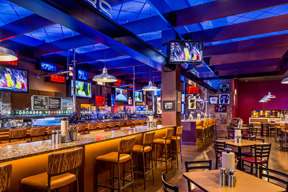
There are two metrics in determining the success or failure of a tribal casino or, for that matter, any indigenous government business enterprise, says Katherine Spilde, chair of the Sycuan Institute on Tribal Gaming at San Diego State University.
“The first metric is return on investment,” Spilde says. “If the casino is not generating net gaming revenue to the tribe, it’s not serving its stated federal purpose” as intended by Congress in the Indian Gaming Regulatory Act (IGRA).
“But there’s another concept,” she says. “There’s return on community. That’s the ‘tribal’ in tribal gaming.”
Unlike commercial casinos generating profits to business partners or corporate shareholders, a tribal casino is owned by members of an indigenous community who rely on every dollar earned for health care, housing and other government services.
There are also intangibles, not the least of which is the fact a tribal casino often becomes a community center, a gathering place for activities and entertainment. This is particularly true on remote, often impoverished reservations.
The casino manager must grasp both concepts: generating profits for government services and creating value to the community.
“You have to understand that it’s government gaming,” says Conrad Granito, general manager of the Muckleshoot Casino, an enterprise of the Muckleshoot Tribe of Washington state. “Your shareholder is every member of the tribe.
“What’s important to the tribe could include employment, water, housing, education or elder care. Those are the drivers.
“The community is not always looking at increasing the share price or return on investment,” Granito says. “The motivation might not be monetary. Understanding that concept is the biggest challenge facing people who get into tribal gaming. That’s what a lot of them don’t get.”
Managing a tribal casino requires an understanding that every dollar directed to marketing expenses is a dollar taken away, at least temporarily, from tribal services.
“That means a scholarship fund or health care for a tribal citizen, fixing a road or heating oil,” Spilde says. “That kind of understanding about the proper use of gaming revenues—maintaining a responsible stewardship of tribal funds—is not something many people truly understand.”
Tribal employment rights ordinances (TEROs) can increase a salary budget by 15 percent, but it fulfills a strategy of combating unemployment and providing opportunity for a disadvantaged community.
A tribal government casino resort can also generate non-gaming amenities and retail and vendor businesses.
Navajo casino restaurants purchase beef from tribal cattle ranches and stock gift shops with crafts by tribal artisans. The Muckleshoot Casino restaurants use salmon raised by community fisheries and huckleberries gathered by the tribe.
Tribal casinos often house museums and cultural centers. Bingo halls and meeting/convention facilities accommodate gatherings of elderly residents and ceremonial events.
Spilde, who was raised on the remote White Earth Band of Ojibwe Indians reservation in Northern Minnesota, is aware of how a tribal government casino can become an important part of an indigenous community.
“The casino is open 24 hours,” Granito says. “It’s a place to bank on the weekends. It’s the place to eat. It’s the place to meet. It’s the center not only for the tribal community, but the local community.”
Derrick Watchman, CEO of Navajo Nation Gaming Enterprise, says using meeting facilities at the tribe’s Twin Arrows Casino Resort for community activities can cut into the bottom line. But it’s a sacrifice he’s willing to make.
Granito managed a casino for a New Mexico pueblo that ordered the day-long closure of the facility to accommodate a ceremony, a move that cost the community about $500,000 in gross gambling revenues.
“You could perhaps run a tribal casino more effectively or more efficiently,” Granito says. “But that’s not always what’s important to the tribe.
“And you do what’s important to the tribe.”






